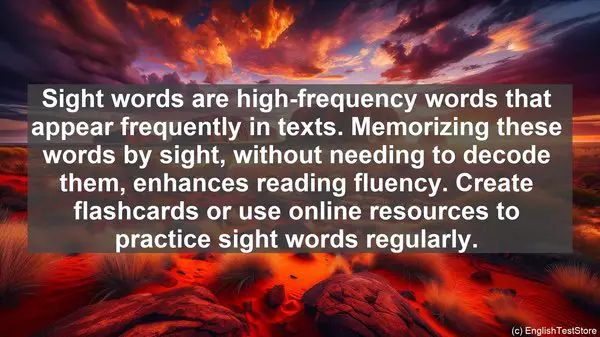Introduction: The Importance of English Reading Skills
Hello, students! Today, we’re going to explore the world of English reading. Reading is not just about words on a page; it’s a gateway to knowledge, imagination, and communication. By mastering reading skills, you’ll be able to understand, analyze, and express your thoughts effectively. So, let’s dive into the top 10 strategies that will help you become a proficient reader.
1. Phonics: The Foundation of Reading
Phonics is the relationship between sounds and letters. By learning phonics, you’ll be able to decode words, making reading a smoother process. Start with simple letter-sound associations and gradually move to more complex phonetic patterns.
2. Sight Words: Instant Recognition
Sight words are high-frequency words that appear frequently in texts. Memorizing these words by sight, without needing to decode them, enhances reading fluency. Create flashcards or use online resources to practice sight words regularly.
3. Reading Aloud: A Multisensory Experience
When you read aloud, you engage multiple senses – seeing, hearing, and speaking. This multisensory experience helps in better comprehension and retention. Additionally, it improves pronunciation and intonation.

4. Predicting: Activating Prior Knowledge
Before diving into a text, take a moment to predict what it might be about. This activates your prior knowledge, making it easier to understand and connect with the content. As you read, check if your predictions were accurate.
5. Context Clues: Unlocking Meaning
Context clues are the words or phrases surrounding an unfamiliar word. By paying attention to these clues, you can often decipher the meaning without needing a dictionary. Look for synonyms, antonyms, or examples.
6. Visualization: Creating Mental Images
As you read, try to visualize the scenes, characters, or concepts. This mental imagery not only makes reading more enjoyable but also aids in comprehension. It’s like creating a movie in your mind!
7. Summarizing: Condensing Information
After reading a passage or chapter, practice summarizing it in your own words. This not only tests your understanding but also helps in organizing and retaining the information. Aim for concise and coherent summaries.
8. Extensive Reading: Diverse Texts, Varied Genres
To become a well-rounded reader, it’s important to explore different genres – from fiction to non-fiction, from poetry to news articles. This exposure to varied texts enhances vocabulary, comprehension, and critical thinking.
9. Reading Buddies: Learning Together
Pair up with a classmate or a sibling for reading sessions. By discussing the texts, sharing insights, and asking questions, you not only enhance your own understanding but also develop communication and collaboration skills.

10. Fun with Reading: Games, Challenges, and Rewards
Learning to read doesn’t have to be all serious. Incorporate games, challenges, and rewards into your reading routine. This not only adds an element of fun but also motivates you to keep improving. Remember, every word you read is a step forward!
